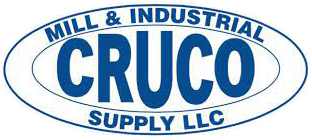Just-in-Time vs. Bulk Ordering: Finding the Right Supply Strategy with Cruco

One of the most fundamental decisions in supply chain management involves choosing between just-in-time delivery and bulk ordering strategies. This choice significantly impacts cash flow, storage requirements, operational flexibility, and overall business performance. While neither approach is universally superior, understanding the advantages and limitations of each strategy enables businesses to make informed decisions that align with their specific operational needs and market conditions.
The evolution of supply chain management has seen many organizations shift between these strategies based on changing business environments, technological capabilities, and market dynamics. Recent global supply chain disruptions have prompted many companies to reevaluate their ordering strategies, seeking the optimal balance between efficiency and resilience.
Understanding Just-in-Time Ordering
Just-in-time ordering focuses on receiving materials and supplies precisely when needed for production or consumption, minimizing inventory holding periods and associated carrying costs. This approach originated in manufacturing environments where reducing waste and improving efficiency were primary objectives.
The fundamental principle behind just-in-time ordering is eliminating excess inventory that ties up working capital and storage space. By coordinating deliveries with actual consumption patterns, businesses can reduce their total investment in inventory while maintaining operational continuity. This approach requires sophisticated demand forecasting, reliable supplier relationships, and efficient logistics coordination.
Just-in-time strategies work particularly well for items with predictable consumption patterns, reliable supplier performance, and relatively short lead times. The approach enables businesses to respond more quickly to changing demand patterns while minimizing the risk of obsolete inventory accumulation.
Benefits of Just-in-Time Approaches
Cash Flow Optimization The most immediate benefit of just-in-time ordering is improved cash flow management. By reducing inventory investment, businesses free up working capital for other operational needs or growth opportunities. This financial flexibility becomes particularly valuable for smaller businesses or those experiencing rapid growth.
Reduced Storage Requirements Minimizing inventory levels reduces the need for warehouse space, storage equipment, and inventory management personnel. These cost savings can be substantial, particularly in markets where real estate costs are high or storage space is limited.
Quality Control Advantages Shorter inventory holding periods reduce the risk of product degradation, obsolescence, or damage during storage. Fresh products and materials often perform better and create fewer quality issues in production or end-use applications.
Responsiveness to Market Changes With minimal inventory commitments, businesses can more quickly adapt to changing customer preferences, new product introductions, or market condition shifts. This flexibility provides competitive advantages in dynamic markets.
Challenges with Just-in-Time Ordering
Supply Chain Vulnerability Just-in-time strategies create dependency on reliable supplier performance and transportation systems. Delays or disruptions can quickly impact operations when buffer inventory is minimal. Recent global supply chain challenges have highlighted these vulnerabilities.
Higher Transaction Costs More frequent ordering typically increases administrative costs, delivery charges, and supplier management requirements. These costs can offset some of the inventory carrying cost savings, particularly for lower-value items.
Limited Negotiating Power Smaller, more frequent orders may reduce purchasing leverage compared to larger volume commitments. Suppliers often provide better pricing and terms for larger orders that provide them with greater volume certainty.
Understanding Bulk Ordering Strategies
Bulk ordering involves purchasing larger quantities less frequently, taking advantage of volume discounts while building inventory buffers that provide operational security. This traditional approach has evolved to incorporate modern inventory management techniques while maintaining its core advantages.
The primary driver of bulk ordering is economic efficiency through volume purchasing power. Suppliers typically offer significant price reductions for larger orders, and the administrative costs of purchasing are spread across more units. Transportation costs per unit often decrease with larger shipment sizes.
Bulk ordering strategies work well for items with stable demand patterns, long shelf lives, and significant volume discount opportunities. The approach provides operational security through inventory buffers while potentially reducing total acquisition costs.
Advantages of Bulk Ordering
Cost Efficiency Volume discounts can provide substantial cost savings that often exceed the carrying costs of additional inventory. Transportation economies of scale further reduce per-unit costs for bulk shipments.
Supply Security Larger inventory buffers provide protection against supply disruptions, demand spikes, or seasonal variations. This security enables consistent operations even when external factors create supply chain challenges.
Reduced Administrative Burden Less frequent ordering reduces procurement administrative costs, supplier communications, and transaction processing requirements. This efficiency can be particularly valuable for businesses with limited purchasing staff.
Negotiating Leverage Larger order commitments provide greater negotiating power with suppliers, potentially securing better pricing, payment terms, or service levels. Long-term volume commitments can create strategic supplier partnerships.
Limitations of Bulk Ordering
Capital Requirements Large inventory investments tie up working capital that could be used for other business purposes. This cash flow impact can be particularly challenging for growing businesses or those with limited financial resources.
Storage and Handling Costs Bulk inventory requires warehouse space, handling equipment, and inventory management systems that create ongoing operational costs. These expenses can be substantial depending on product characteristics and storage requirements.
Obsolescence Risk Larger inventory quantities increase exposure to product obsolescence, market changes, or quality deterioration. This risk is particularly significant for products with short life cycles or changing specifications.
Hybrid Approaches: The Best of Both Worlds
Many successful businesses implement hybrid strategies that combine elements of both just-in-time and bulk ordering approaches. These strategies typically categorize items based on their characteristics and apply the most appropriate ordering approach to each category.
ABC Analysis Integration High-value items with predictable demand might use just-in-time approaches to minimize capital investment, while lower-value consumables could benefit from bulk ordering to reduce transaction costs and ensure availability.
Seasonal Considerations Some businesses use bulk ordering for predictable seasonal demand while maintaining just-in-time approaches for regular consumption items. This strategy balances cost efficiency with operational flexibility.
Supplier Relationship Factors Different suppliers may be better suited to different ordering approaches based on their capabilities, pricing structures, and service levels. Diversifying ordering strategies across suppliers can optimize overall performance.
Technology’s Role in Strategy Optimization
Modern inventory management systems enable more sophisticated approaches to ordering strategy optimization. Advanced forecasting algorithms can identify the most cost-effective ordering approaches for different items based on demand patterns, supplier performance, and cost factors.
Real-time visibility systems provide the data needed to implement just-in-time strategies effectively while automated reordering systems can manage bulk inventory replenishment efficiently. These technologies enable businesses to implement more nuanced strategies that adapt to changing conditions.
Predictive analytics help identify when strategy changes might be beneficial based on market trends, supplier performance changes, or internal operational shifts. This capability enables proactive strategy optimization rather than reactive adjustments.
Industry-Specific Considerations
Different industries often favor different ordering strategies based on their operational characteristics and market dynamics. Manufacturing operations with predictable production schedules may benefit from just-in-time approaches, while seasonal businesses might prefer bulk ordering for peak demand periods.
Healthcare organizations often require hybrid approaches that ensure critical supplies are always available while managing costs for routine consumables. Retail operations must balance inventory investment with product availability across multiple locations and channels.
Construction and project-based businesses face unique challenges where material requirements vary significantly between projects, often requiring flexible approaches that can accommodate both planned and emergency needs.
Financial Impact Analysis
Choosing between ordering strategies requires comprehensive financial analysis that considers all relevant costs and benefits. This analysis should include purchase price differences, inventory carrying costs, storage expenses, administrative costs, and risk factors.
Working capital impact analysis helps determine the financial feasibility of different approaches. Businesses with limited capital resources may need to prioritize cash flow optimization, while those with ample resources might focus on operational efficiency and cost reduction.
Return on investment calculations should consider both direct cost savings and indirect benefits such as improved customer service, reduced stockouts, or enhanced operational flexibility. These broader impacts often justify strategy choices that might not appear optimal based solely on direct costs.
Risk Management Considerations
Both ordering strategies involve different risk profiles that must be evaluated based on business priorities and risk tolerance. Just-in-time approaches create supply chain dependency risks, while bulk ordering involves inventory obsolescence and capital commitment risks.
Risk mitigation strategies might include supplier diversification, safety stock maintenance, or contract terms that provide flexibility during disruptions. The optimal approach depends on the specific risks faced by each business and their capability to manage different types of supply chain challenges.
Business continuity planning should consider how different ordering strategies support operational resilience during various disruption scenarios. This analysis often reveals the need for hybrid approaches that balance efficiency with security.
Making Strategic Decisions
Successful ordering strategy selection requires thorough analysis of product characteristics, demand patterns, supplier capabilities, financial constraints, and operational priorities. This decision-making process should involve stakeholders from procurement, operations, finance, and strategic planning functions.
Regular strategy review and adjustment ensure that ordering approaches remain optimal as business conditions change. Market dynamics, supplier performance, and internal operational changes all influence the effectiveness of different strategies.
Performance measurement systems should track the effectiveness of chosen strategies and identify opportunities for improvement. Key metrics might include total cost of ownership, inventory turns, stockout frequency, and cash flow impact.
Selecting the optimal ordering strategy requires careful consideration of your specific operational needs, financial constraints, and market conditions. Whether you’re evaluating just-in-time approaches, bulk ordering strategies, or hybrid solutions, the right supply chain partner can help analyze your requirements and implement the most effective approach for your business. If you’re looking to optimize your purchasing strategies or explore how different ordering approaches might benefit your operations, consider working with experienced professionals like Cruco Mill & Industry Supply who can provide objective analysis and implementation support tailored to your unique situation.
